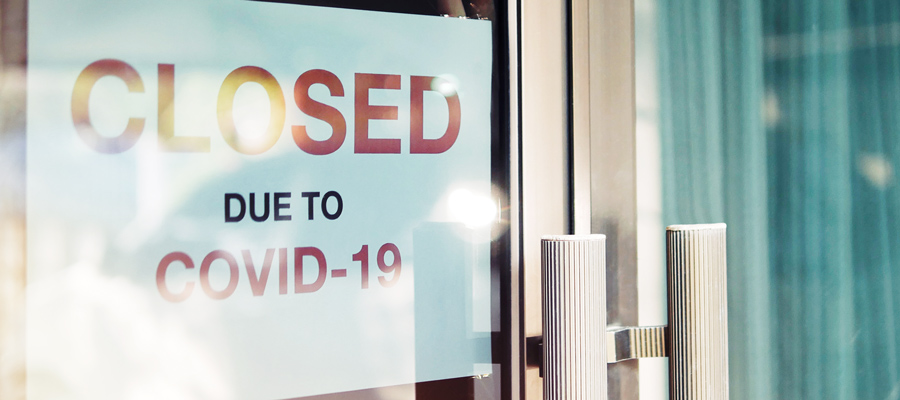BC should lead the country in adopting a COVID Zero strategy

The second COVID-19 wave is once again putting a spotlight on the challenges containing this deadly virus.
In the last week, BC set records for new cases and hospitalizations. Positivity rates are dangerously high, especially in the Fraser Health region. The number of deaths has been climbing and there are now over 50 long-term care and health care outbreaks.
Most provinces have been forced to return to various modified lockdowns in an attempt to slow explosive growth in cases. Manitoba recently became Canada’s hotspot and was forced to close all non-essential businesses and ban social gatherings. Toronto and the Peel region moved to ban indoor dining and other social activities. Even Alberta, with a government previously resistant to public health measures, is now trying to avoid overwhelming its hospitals. Despite a recent increase in cases, the Atlantic provinces remain the bright spot in Canada (see Figure 1).
There is no question that the BC government and public health officials are working tirelessly to protect British Columbians. Yet I fear that we continue not to adopt the lessons of more successful jurisdictions at our peril. And in doing so, we continue to see this terrible disease move through long-term care homes, place unsustainable pressures on our health care workforce, and prolong economic pain and uncertainty for small businesses. And while vaccines are thankfully on the horizon, we likely have at least a year to go before the virus will cease to be a major threat.
I fear that we continue not to adopt the lessons of more successful jurisdictions at our peril.
In July, the Atlantic provinces created a regional bubble which imposed self-isolation restrictions on travelers. The strategy resembles approaches taken in a number Asia Pacific countries that have maintained little or no domestic transmission of COVID-19. These jurisdictions include Australia, China, New Zealand, South Korea, and Taiwan.
In recent weeks, a growing chorus of doctors, public health experts, and researchers have called for Canada to embrace a “COVID Zero” approach. In essence, this means adopting much more aggressive suppression practices with the goal of getting case counts as close to zero as possible. As Irfan Dhalla of the University of Toronto put it, “We should look at COVID-zero as a rallying cry for a better approach.” This stands in stark contrast with the approach in western and central Canada of mitigation where we cycle through measures intended to avoid health system collapse.
Put simply, jurisdictions that embrace a COVID Zero orientation have performed much better than western and central Canada, the US, and much of Europe (see Figure 1). They face fewer cases and deaths, and daily life has largely returned to normal. Victoria state, Australia recently marked 33 days in a row without new cases. Data from 45 countries demonstrate that the economies of Asia Pacific countries, which have aggressively moved toward suppression and elimination, have outperformed other countries.
Our mitigation approach, in contrast, lacks clear goals other than avoiding health system collapse until vaccines are widely available. This will inevitably mean we add more restrictions as cases and hospitalizations go up, and as cases trend down we open things up too quickly. We are also likely to see more deaths among those made more vulnerable in society as well as frontline health care workers. On our current path in BC and much of Canada, we risk the closure of schools with consequences for children and women’s labour force participation.
Instead of continuing with a false dichotomy between public health and the economy, we need to set the bar higher. Here’s how:
First, COVID Zero strategies include a robust system of testing, tracing, isolating and social supports. In Canada, we continue to struggle with testing capacity. We have put very limited measures in place to eliminate importing new cases via international and domestic travel. For example, New Zealand and Australia have government-managed isolation and quarantine before travelers can enter the community. In BC and Ontario, we haven’t even implemented paid sick leave, even though we know that this disease is disproportionately affecting racialized communities and precarious workers who don’t have the luxury of working from home. (BC does not collect and report COVID-19 data by race/ethnicity or socio-economic status, but we can infer that COVID-19 is hitting racialized communities in the Fraser South region hard.)
Second, we will need to impose a time-limited lockdown in order to buy time and bring new cases close to zero. Schools, child care, and other vital public services, along with essential businesses, should remain open. Keeping these services open requires clear and consistent health and safety measures. We need to limit class sizes and improve ventilation in schools. Work-from-home should be mandated where possible. Restrictions and enforcement of non-essential travel are required. This isn’t forever.
Third, we need to rapidly scale-up our test, trace, isolate and social support system during lockdown. BC and other provinces face testing and surveillance challenges. We are unable to trace the transmission source for hundreds of cases each week. As a result, we are missing too many new cases. BC had the foresight to begin increasing contact tracing capacity in the summer, but at a point, we won’t be able to keep up with new cases. We need to think beyond contact tracers, too. BC needs a bold health workforce strategy to bolster our health care system capacity. We need more workers, but also need to address burnout and low morale. When it comes to learning from the SARS experience, the voices of frontline workers and their unions need to be taken more seriously.
Instead of continuing with a false dichotomy between public health and the economy, we need to set the bar higher.
Health equity needs to be firmly embedded in our COVID response and public policies now and moving forward. Lower-income households must be able to isolate with adequate supports without the fear of eviction. Legislated paid sick leave is necessary for the more than half of BC workers without it. The $300 temporary income and disability assistance increase should be made permanent with a further increase to the Market Basket Measure. Affordable housing and quarantine spaces that include food delivery and health care supports are required. COVID has revealed how intimately the health of communities and local economies depend on bold investments in building the capacity of the public and non-profit sectors—including child care, affordable housing and mental health care.
Fourth, we need officials and employers to foster a deeper commitment to occupational health and safety and mask wearing. It might come as a surprise but some frontline health care workers still struggle to get access to appropriate PPE in their workplaces. In schools, we should adopt the precautionary principle and require masks among older students. Public sector employers, including health authorities, need to be consistent in their approaches to PPE, especially in light of the Public Health Agency of Canada’s acknowledgement that airborne transmission occurs.
Fifth, we need BC to lobby the federal government to take leadership in developing a COVID Zero framework, including national long-term care standards and much stricter travel restrictions including regional travel bubbles. We need to operate as one country and put unhelpful jurisdictional squabbles aside. Moving forward we need to see much greater federal and provincial policy coordination and investments in public health infrastructure and public sector capacity and resilience.
Finally, leading public health researchers have made the case for a COVID Zero approach in light of the unknown long-term implications of “long COVID” and the potential burden on society:
“[T]he argument is strong for countries adopting a so-called zero-COVID strategy, which aims to eliminate domestic transmission. The New Zealand experience shows that this strategy is an important aspiration, not least as the growing burden of so-called long COVID becomes apparent in people who have survived COVID-19 but continue to have symptoms for longer than expected.”1
Canada is not an island. We share a large land border. However, our geographical realities shouldn’t keep us from setting the bar higher. There is good reason for vaccine optimism, but we have many months ahead. If we move quickly and decisively, we have a fighting chance to make the second wave the last wave.
Note
- Emeline Han, Melisa Mei Jin Tan, Eva Turk et al. (2020), Lessons learnt from easing COVID-19 restrictions: an analysis of countries and regions in Asia Pacific and Europe, The Lancet 369, 1533.
Topics: Uncategorised



